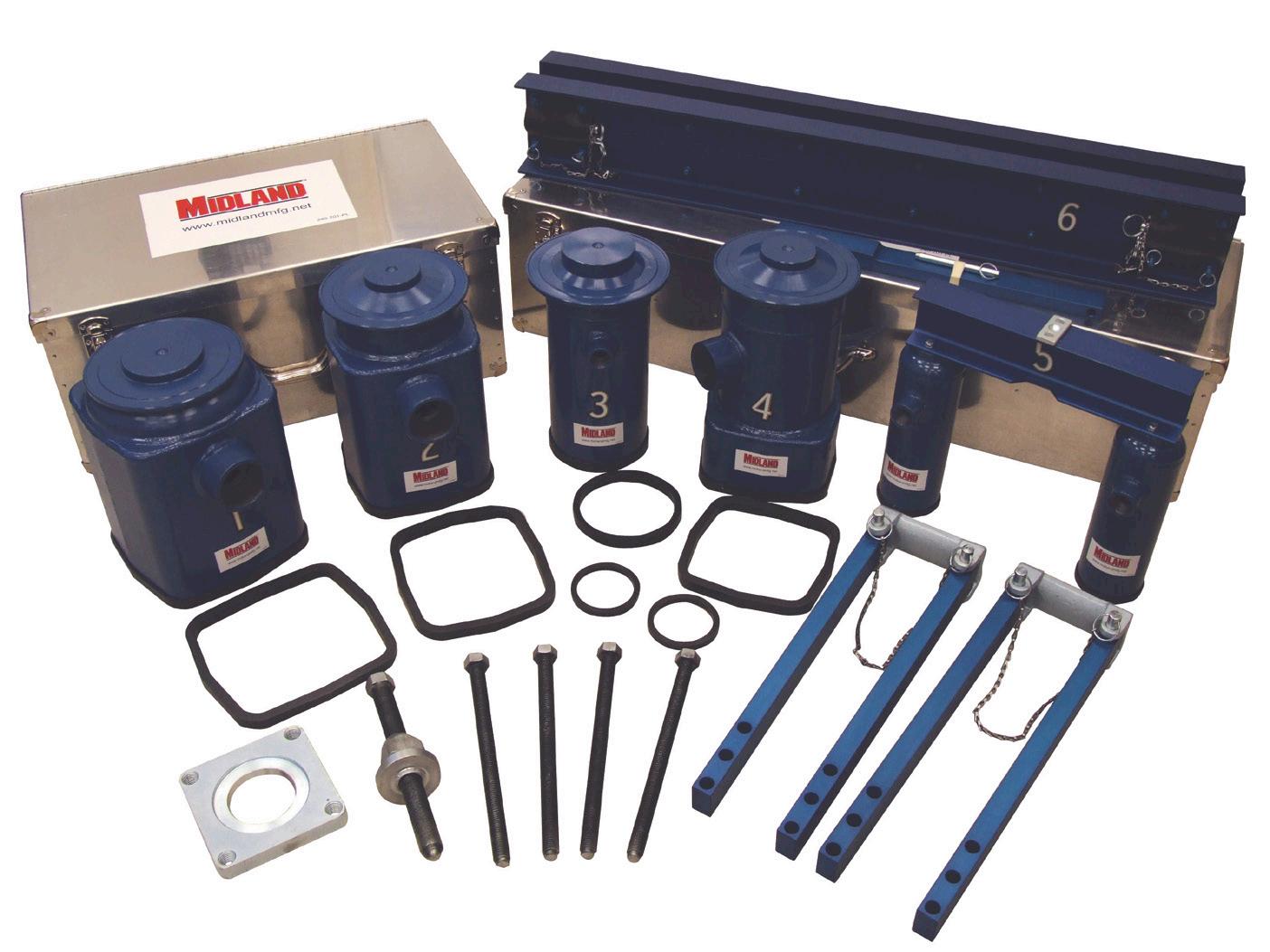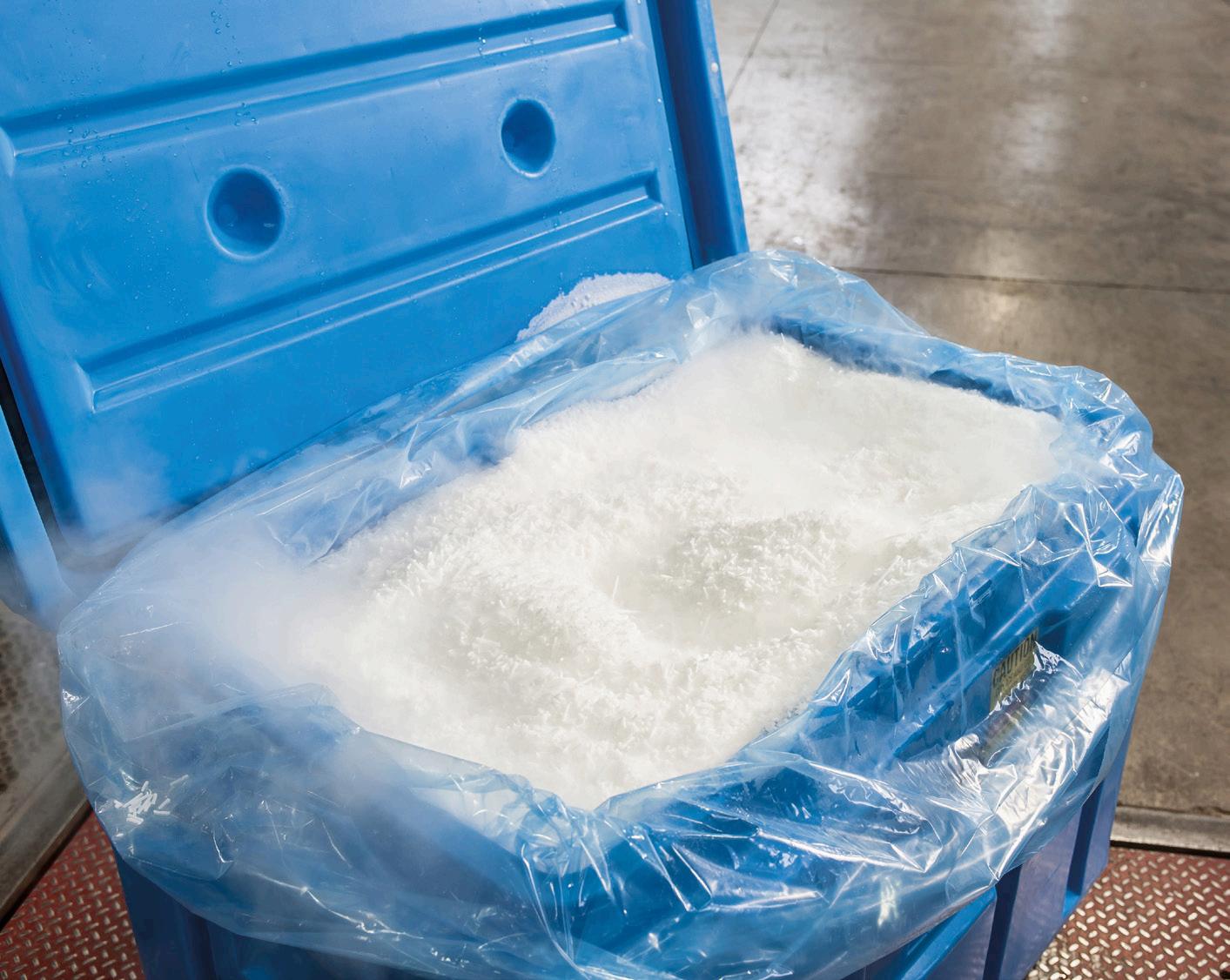
5 minute read
The risks of dry ice in air transport
their level of conscientiousness or training – to making mistakes. So, all railroad technicians must take every precaution necessary to ensure that every coupling is attached properly and every valve is closed properly before, during and after every railcar loading or unloading.
A FRIEND TO FIRST RESPONDERS Despite the next-generation design and operation of railcars and their ancillary components, the high-level training that rail personnel receive, the attention paid to guaranteeing that the railway infrastructure is in good working order and stricter regulations governing the transport of hazardous materials, the next hazmat release incident is always looming. To ensure that the sometimes inevitable doesn’t become the next catastrophic, headline-generating hazmat release incident, manufacturers of railcar equipment have developed Emergency Response Kits (ERKs) that are marketed to fire departments, emergency repsonse contractors and railway dangerous goods officers, or any other organisations that employ first responders who are tasked with responding to railroad accidents or non-accidental releases (NARs).
One of the companies that has taken the lead in the development of ERKs is Midland Manufacturing, based in Skokie, Illinois. Its B-240/B-243 Emergency Response Kit has been developed to give emergency responders three easy-to-use cover assemblies and a carrying case that contains all of the tools and parts needed to quickly and safely cap hazmat leaks emanating from the top of pressurised railcars in the event of an accident or NAR incident.
A typical ERK consists of a toolbox containing a broad range of tools and replacement parts; cover cans of five different sizes that are used to cap a leaking valve or fitting, along with corresponding gaskets; and a bridge that is used to secure a cover can to the railcar’s manway cover plate. Knowing the importance of the ERK’s components being able to perform reliably in high-leverage situations, all of the tools are highly engineered and designed to be durable no matter the pressures, product flows and general abuse they are subject to during a hazmat release incident.
Like any product, the user of an ERK is only as proficient in its use as the level of training they receive. With that in mind, the providers of ERKs offer training classes and videos that are formatted to make the user capable of performing confidently during the most dangerous release incidents.
In fact, it is recommended that all first responders practice using the components in the ERK at least twice a year and, if possible, train with an actual hazmat railcar as a way to better familiarise themselves with the railcar’s components and where things can go wrong. The ultimate goal is for first responders to feel as comfortable as possible with the ERK and its components and capabilities long before they ever have to use it.
ALTHOUGH RAIL TRANSPORT IS VERY SAFE, IT IS BEST
TO BE PREPARED. MIDLAND MANUFACTURING IS *Troy Scarrow is regional marketing manager for Midland Manufacturing, which specialises in equipment for pressurised and general purpose rail tank cars, chemical cargo tanks and tank containers, including bottom and top loading/unloading valves, pressure relief valves, level gauge device and monitoring equipment. Troy can be contacted by email at troy.scarrow@opwglopbal.com. Midland is part of OPW, itself part of Dover Corp. More information can be found at midlandmfg.com.
CHILLED OUT
DRY ICE • AIR CARGO OPERATORS EXPECT TO BE CARRYING INCREASING VOLUMES OF DRY ICE AS COOLANT; FINNAIR HIGHLIGHTS THE RISKS AND EXPLAINS HOW IT IS APPROACHING THEM
DRY ICE – CARBON dioxide in a frozen state – has been used for decades to keep goods in transit cold. It is far more effective than using water ice, as it stays frozen for longer, but when it ‘melts’ – more accurately, ‘sublimates’ – it turns back to gaseous carbon dioxide. As a result, it is classified under the dangerous goods regulations as UN 1845, Class 9. In road transport it is not regarded as a problem and, when used as a coolant, is not subject to the provisions of ADR. However, sublimation is
SUBLIMATION OF DRY ICE POSES PARTICULAR
HAZARDS DURING AIR TRANSPORT considered a serious issue in air transport – an aircraft is an enclosed tube and there is no way for gaseous CO² to escape, posing a risk to passengers and crew, so it is subject to the regulations.
The emergence of vaccines during the Covid-19 pandemic, many of which need to be kept at refrigerated temperatures during transport and which are being widely carried by air, has raised awareness of the use of dry ice but has also, perhaps, brought it into contact with logistics professionals who have had no experience with it until now.
Henry Rantala, who was, before his retirement this past January, manager of compliance and standards at Finnair, where he worked for more than 40 years, has brought his long experience to the fore to explain the risks and how they can be addressed during the transport of goods – mainly pharmaceuticals, medical samples and high-value foodstuffs – by air.
PREPARE FOR GROWTH Packagings containing dry ice cannot be fully airtight; sublimated gas needs to vent to the outside of the package to avoid damage and, in the worst case, the explosion of sealed packages. Air carriers know that this will happen and so need to calculate the likely extent of the release of gaseous CO². This is based on the sublimation rate of dry ice which, according to studies made by the US Federal Aviation Administration (FAA), is 2 per cent for packages with less than 45 kg of dry ice and 1 per cent for packages with more than 45 kg. That rate is on a per-hour basis.
In practice, the actual sublimation rate is more variable. Account needs to be taken of the air pressure, the ventilation of the packagings, the required temperature, the duration of the flight and, especially, the form in which the dry ice is used. Although pellets are the most common, there are other widely used forms, each of which has a different sublimation rate. But, using these guidelines, a carrier can calculate how much dry ice can be carried in any particular flight.
Finnair carried more than 300 tonnes of dry ice as coolant in 2020, Rantala reports; but, as demand for the transport of goods packed in dry ice is needed, this figure is likely to increase. Finnair has been working on new processes that will allow it to calculate the exact sublimation rate per aircraft in order to maximise the volume of such goods it can carry and speed up delivery.
This calculation will rely on shippers informing the carrier of the exact sublimation rate and volume of dry ice for each shipment. Again, though, some shippers will be new to using dry ice and it may take some time for reports to become sufficiently accurate to allow the approach to be accurate. However, as Rantala says, “Being prepared is always better than being caught off guard.” cargo.finnair.com











